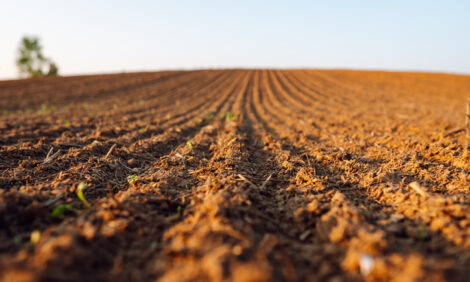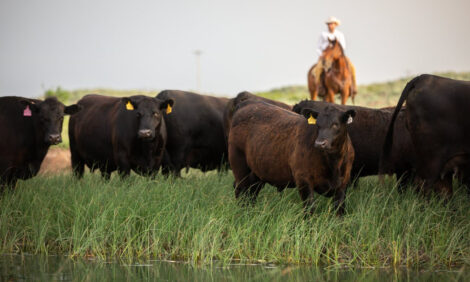



Weekly global protein digest: China, Brazil, Argentina & US in the news
Market analyst Jim Wyckoff shares highlights from this week's activities in the global protein market.China resumes imports of Brazilian beef
China’s blockade of Brazilian beef has come to a halt, according to the Brazilian industry group Abrafrigo. China halted imports from Brazil in September after the country reported two atypical cases of BSE and announced Wednesday (Dec. 15) that imports of boneless beef products from animals less than 30 months would restart that day. But six European grocery-store chains announced they will halt imports of some or all Brazilian beef products over Amazon rainforest destruction, while others put a more-broad restriction on imports from South America. However, it is not clear what volume of beef/beef products would be involved with the coming halts. It would also seem unlikely the U.S. would be able to capture any market share given the long-standing beef trade issues between the U.S. and European Union (EU) over the use of growth hormones in U.S. beef production.
China reports new ASF case
China reported African swine fever was found in two trucks in its Hebei province transporting pigs from other provinces. This was the first official reporting of ASF since July, though there have been unreported cases.
China to levy higher tariffs on pork imports in 2022
China will raise import tariffs on most pork products next year, the finance ministry said, amid the sharp increase in domestic production. Tariffs for most favored nations, including the U.S., will return to 12% on Jan. 1, from 8% currently, according to a ministry statement. China lowered its tariffs on frozen pork in 2020 from 12% to 8% as the country faced soaring domestic meat prices.
USDA publishes rule for supplemental US dairy payments
US dairy producers can start to enroll in the Dairy Margin Coverage (DMC) program for 2022 as of today and the supplemental DMC payments that were approved as part of Covid aid. The signup effort runs through Feb. 18. The final rule on the supplemental DMC plan was published in today’s Federal Register in a package that covered several different program tweaks. The only portion that is open for public comment is relative to the Oriental Fruit Fly (OFF) Program as authorized in the Consolidated Appropriations Act of 2019. Comments there are due by Feb. 11.
US meat packers’ profit margins rose 300% during pandemic: Biden administration
White House officials/economists continue to target US meatpackers. Four of the biggest meat-processing companies, using their market power in the highly consolidated US market to drive up meat prices and underpay farmers, have tripled their own net profit margins since the pandemic started, White House economic advisers said.
Financial statements of the meat-processing companies — which control 55%–85 % of the market for beef, poultry, and pork — contradict claims that rising meat prices were caused by higher labor or transportation costs, advisers led by National Economic Council Director Brian Deese wrote in an analysis published on the White House website Friday. Officials studied earnings statements from Tyson Foods Inc., the chicken producer and biggest U.S. meat company by sales; Brazil-based JBS SA, the world’s biggest meatpacker; Brazilian beef producer Marfrig Global Foods SA which owns most of National Beef Packing Company; and Seaboard Corp. RIC. Those statements showed a 120 percent collective jump in their gross profits since the pandemic and a 500 percent increase in net income, the analysis shows. These companies recently announced $1 billion in new dividends and stock buybacks, on top of the more than $3 billion they paid to shareholders since the pandemic began.
The North American Meat Institute, a meat trade group, accused the White House of “cherry-picking” data. “It is no coincidence this blog post appears on the same day as the Consumer Price Index is released showing gas and energy prices are up nearly 60% over the past 12 months which is nearly 10 times the rate of inflation for food,” President Julie Anna Potts said in a statement.
Increases in meat prices accounted for 25% of the rise in consumer prices for food consumed at home in November, a big driver in the surge in inflation seen in recent months. Tyson increased the price of beef “so much — by more than 35% — that they made record profits while actually selling less beef than before,” the advisers wrote.
Argentina eases some beef export restrictions
Argentina will adjust its restrictions on beef exports, removing restrictions on exports to emerging markets and will let premium cuts of beef to be exported to Europe, the U.S. and other countries. There will still be restrictions on the export of most of the cuts consumed in Argentina, a bid to continue to temper inflation that is running at a 50% annual pace. This may slow a push from the Argentine cattle industry for heavier slaughter weights. Currently, animals have to be at least 300 kilograms (661 pounds) to be slaughtered. The industry wanted that to be increased every six months until it hit 400 kilograms, something the industry said would put 600,000 tons more of beef on the market in two-and-one-half years.
Tyson Foods to spend $1.3 billion on automation the next three years
Tyson Foods aims to spend more than $1.3 billion over the next three years, including $500 million in its 2022 fiscal year, on automation in its processing plants as the industry struggles with finding enough workers to perform various jobs in the plants. The automation push will increase output and cut labor costs and produce cumulative savings of more than $4560 million by their fiscal year 2024, according to CEO Donnie King in a webinar for investors. That includes using machines versus humans to debone chicken, he noted. "Automation will help us increase volumes, improve reliability and reduce cost over the mid- to long term," King said. "We plan to use automation to reduce the number of hard-to-fill roles." Those who are replaced by automation will be moved into other roles, he noted, adding, “We have front-line roles, many of which are harder to fill.” The firm also said it plans to open 12 new plants over the next two years that will raise its overall production capacity by about 1.3 billion pounds.
USDA’s latest US dairy retail report
NATIONAL RETAIL REPORT (DMN): The total number of conventional dairy ads grew by 11 percent this week, while the total number of organic ads fell by 2 percent. Conventional ice cream in 48 to 64-ounce containers is the most advertised dairy item this week. Ads for conventional cheese increased by 17 percent from last week, while there were no advertised organic cheese products present in this week’s survey. The total number of conventional milk ads fell by 35 percent; organic milk ads grew by 30 percent this week. Ads for conventional gallon-sized milk, the most advertised conventional milk item, decreased by 25 percent. The number of ads for organic milk in gallon-sized containers increased by 122 percent this week.
US pork, beef export sales rise in latest week
USDA Thursday morning reported US pork net sales of 31,100 metric tons (MT) for 2021 were up 58 percent from the previous week and 20 percent from the prior 4- week average. Increases primarily for Mexico (22,700 MT, including decreases of 600 MT), Canada (2,700 MT, including decreases of 400 MT), Japan (2,100 MT, including decreases of 500 MT), South Korea (1,800 MT, including decreases of 1,100 MT), and Colombia (1,300 MT, including decreases of 400 MT), were offset by reductions for China (700 MT), Australia (600 MT), and Nicaragua (200 MT). Net sales of 5,800 MT for 2022 were primarily for Mexico (2,500 MT), Japan (800 MT), China (700 MT), Australia (500 MT), and Colombia (500 MT). Exports of 30,100 MT were down 10 percent from the previous week and from the prior 4-week average. The destinations were primarily to Mexico (14,500 MT), China (4,200 MT), Japan (3,200 MT), South Korea (2,800 MT), and Canada (1,700 MT).
Beef: Net sales of 17,100 MT for 2021 were up noticeably from the previous week, but down 3 percent from the prior 4-week average. Increases primarily for Japan (4,700 MT, including decreases of 300 MT), South Korea (4,500 MT, including decreases of 600 MT), China (3,700 MT, including decreases of 100 MT), Canada (1,400 MT, including decreases of 100 MT), and Taiwan (800 MT, including decreases of 300 MT), were offset by reductions for Vietnam (200 MT). Net sales of 5,700 MT for 2022 were primarily for China (1,500 MT), South Korea (1,400 MT), Japan (1,000 MT), and Mexico (900 MT). Exports of 18,500 MT were up 11 percent from the previous week and 6 percent from the prior 4-week average. The destinations were primarily to South Korea (5,200 MT), Japan (4,400 MT), China (3,000 MT), Canada (1,700 MT), and Taiwan (1,600 MT).
TheCattleSite News Desk
IMPORTANT NOTE: I am not a futures broker and do not manage any trading accounts other than my own personal account. It is my goal to point out to you potential trading opportunities. However, it is up to you to: (1) decide when and if you want to initiate any traders and (2) determine the size of any trades you may initiate. Any trades I discuss are hypothetical in nature.
Here is what the Commodity Futures Trading Commission (CFTC) has said about futures trading (and I agree 100%): 1. Trading commodity futures and options is not for everyone. IT IS A VOLATILE, COMPLEX AND RISKY BUSINESS. Before you invest any money in futures or options contracts, you should consider your financial experience, goals and financial resources, and know how much you can afford to lose above and beyond your initial payment to a broker. You should understand commodity futures and options contracts and your obligations in entering into those contracts. You should understand your exposure to risk and other aspects of trading by thoroughly reviewing the risk disclosure documents your broker is required to give you.



